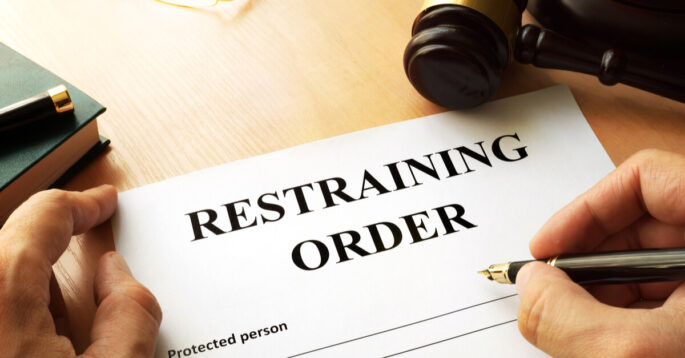Older Americans may file a restraining order against a caregiver or a family member who has abused them. They should gather the evidence needed to meet the burden of proof and contact a local law enforcement agency. Elder abuse restraining orders can save lives.
Restraining Orders for Elder Abuse Explained
A restraining order is a protective ruling used by courts. Restraining orders can be temporary or permanent. The courts may issue a restraining order to protect those who have been the victim of some type of abuse.
Types of abuse that can warrant a restraining order include:
- Sexual assault
- Stalking
- Harassment
- Physical harm
- Domestic violence
Restraining orders are a way for older adults to protect themselves and maintain a legal record of abuse. For example, they may be living in a nursing home or care facility where caretakers abuse them or neglect their needs.
They also send a warning to abusers, as those who violate restraining orders can face jail time and large fines.
If you or an older person you love is suffering from elder abuse, it may be helpful to get a restraining order. You can start this process by explaining the situation to law enforcement and providing evidence of the abuse. The request for an elder abuse restraining order can then be taken to the court.
Who Can Get a Restraining Order?
Anyone can get a restraining order against another person who has committed an act of violence against them.
To receive an elder abuse restraining order, you must first go to court and fill out the required paperwork. You need to provide some evidence of the alleged abuse. This may be photos or written testimony.
You may even be able to get a restraining order on behalf of someone else. For example, adult children can file a restraining order for their elderly parents in some cases.
After you file the paperwork, a judge will review your petition and can issue a temporary elder abuse restraining order. The courts will then process information on the accused person’s location and see if they should make the restraining order permanent.
It does not cost money to get a restraining order. However, each state has its own rules regarding the forms that need to be filled out and provided to the courts.
A nursing home abuse lawyer may be able to help you navigate the process of getting a restraining order depending on where you live.
Burden of Proof for Restraining Orders
The burden of proof refers to evidence presented to the courts before a restraining order is granted. This evidence indicates that the elder is at risk and that a restraining order is needed for their safety.
Evidence to meet the burden of proof may include:
- Photos
- Testimonies
- Objects such as knives or weapons
- Medical documents
- Online files
Each state has its own laws regarding the burden of proof, and the bar that needs to be cleared may be higher or lower depending on the state in question. If you talk with law enforcement or a lawyer before filing your restraining order, they can help you determine what the local requirements are.
How Restraining Orders Have Protected Older Americans
Restraining orders have been proven to protect the lives of older Americans who are facing abuse.
For example, Stan Lee, the legendary creator of a number of Marvel Comics superheroes, was once a victim of elder abuse. Lee filed a restraining order against his caregiver, claiming the man was isolating him and pressuring him.
Elder abuse restraining orders can also punish those who do not follow them. A 74-year-old woman was hurt after a suspect threw an unopened energy drink at her. Because the woman had a restraining order against her attacker, he was sentenced to jail for elder abuse. His bail was set at $50,000.
In another case, an elderly woman living in California filed a restraining order and attempted to serve the paperwork to her abuser. Rather than taking the paperwork, the man pushed the woman to the ground and smashed her car windshield. Police later arrested the man.
To reduce the risk of physical injuries from abusers, ask local law enforcement how to safely serve elder abuse restraining orders.
Next Steps To Access Restraining Orders and Legal Justice
Elder abuse restraining orders and other types of legal action can help keep older Americans safe. For best results, speak to a local law enforcement agency or even an attorney to see how to get a restraining order for elder abuse in your state.
You may also be able to take other types of legal action if you were the victim of elder or nursing home abuse. This includes filing a legal claim to get money for the harm you suffered. You can learn more about your legal options with a free case review.

